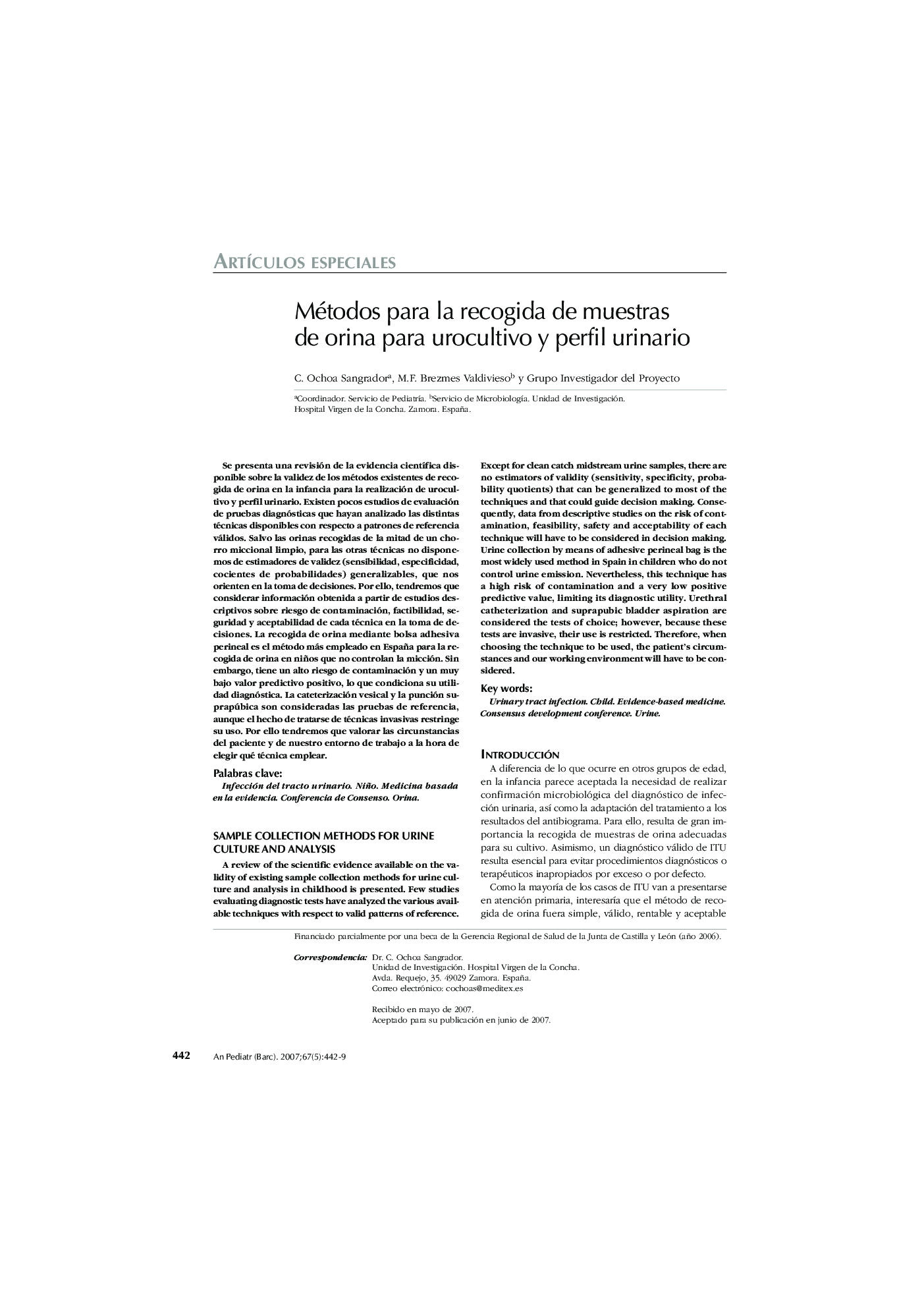| Article ID | Journal | Published Year | Pages | File Type |
|---|---|---|---|---|
| 4142869 | Anales de Pediatría | 2007 | 8 Pages |
Abstract
A review of the scientific evidence available on the validity of existing sample collection methods for urine culture and analysis in childhood is presented. Few studies evaluating diagnostic tests have analyzed the various available techniques with respect to valid patterns of reference. Except for clean catch midstream urine samples, there are no estimators of validity (sensitivity, specificity, probability quotients) that can be generalized to most of the techniques and that could guide decision making. Consequently, data from descriptive studies on the risk of contamination, feasibility, safety and acceptability of each technique will have to be considered in decision making. Urine collection by means of adhesive perineal bag is the most widely used method in Spain in children who do not control urine emission. Nevertheless, this technique has a high risk of contamination and a very low positive predictive value, limiting its diagnostic utility. Urethral catheterization and suprapubic bladder aspiration are considered the tests of choice; however, because these tests are invasive, their use is restricted. Therefore, when choosing the technique to be used, the patient's circumstances and our working environment will have to be considered.
Keywords
Related Topics
Health Sciences
Medicine and Dentistry
Perinatology, Pediatrics and Child Health
Authors
Ochoa Sangrador, M.F. Brezmes Valdivieso, Grupo Investigador del Proyecto Grupo Investigador del Proyecto,
